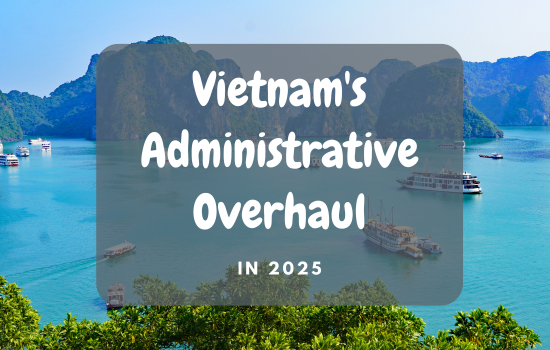


Vietnam is undergoing a significant administrative restructuring, reducing its 63 provinces and centrally governed cities to 34. This move aims to streamline governance and improve efficiency across the nation.
Reduction of Administrative Units
The country will consolidate its current 63 provincial-level units into 28 provinces and 6 centrally governed cities, according to the Vietnamese government's approved master plan.
Elimination of District-Level Governance
The traditional four-tier administrative structure (central–provincial–district–commune) will be trimmed to a three-tier system: central government, provincial/municipal level, and commune/ward level.
Merging of Local Units
Approximately 5,000 commune- and ward-level units will be merged, leading to a 60–70% reduction in grassroots-level administrative entities. The change is expected to cut bureaucracy and enhance public service delivery.
| Status | Provinces Involved | New Name | Administrative Center |
|---|---|---|---|
| Remain Unchanged | Hanoi, Hue, Lai Chau, Dien Bien, Son La, Lang Son, Quang Ninh, Thanh Hoa, Nghe An, Ha Tinh, Cao Bang | – | – |
| Merged | Tuyen Quang + Ha Giang | Tuyen Quang | Current Tuyen Quang |
| Lao Cai + Yen Bai | Lao Cai | Current Yen Bai | |
| Bac Kan + Thai Nguyen | Thai Nguyen | Current Thai Nguyen | |
| Vinh Phuc + Phu Tho + Hoa Binh | Phu Tho | Current Phu Tho | |
| Bac Ninh + Bac Giang | Bac Ninh | Current Bac Giang | |
| Hung Yen + Thai Binh | Hung Yen | Current Hung Yen | |
| Hai Duong + Hai Phong | Hai Phong | Current Hai Phong | |
| Ha Nam + Ninh Binh + Nam Dinh | Ninh Binh | Current Ninh Binh | |
| Quang Binh + Quang Tri | Quang Tri | Current Quang Binh | |
| Quang Nam + Da Nang | Da Nang | Current Da Nang | |
| Kon Tum + Quang Ngai | Quang Ngai | Current Quang Ngai | |
| Gia Lai + Binh Dinh | Gia Lai | Current Binh Dinh | |
| Ninh Thuan + Khanh Hoa | Khanh Hoa | Current Khanh Hoa | |
| Lam Dong + Dak Nong + Binh Thuan | Lam Dong | Current Lam Dong | |
| Dak Lak + Phu Yen | Dak Lak | Current Dak Lak | |
| Ba Ria-Vung Tau + Binh Duong + HCMC | Ho Chi Minh City | Current Ho Chi Minh City | |
| Dong Nai + Binh Phuoc | Dong Nai | Current Dong Nai | |
| Tay Ninh + Long An | Tay Ninh | Long An | |
| Can Tho + Soc Trang + Hau Giang | Can Tho | Current Can Tho | |
| Ben Tre + Vinh Long + Tra Vinh | Vinh Long | Current Vinh Long | |
| Tien Giang + Dong Thap | Dong Thap | Current Tien Giang | |
| Bac Lieu + Ca Mau | Ca Mau | Current Ca Mau | |
| An Giang + Kien Giang | An Giang | Current Kien Giang |
Note:
Detailed plans for these mergers will be proposed to the National Assembly in May and June 2025 for approval.
Business Operations
Businesses may need to adjust to new administrative boundaries, which could impact licensing, taxation, and regulatory processes. Foreign-invested enterprises operating across multiple provinces should keep close contact with legal consultants for compliance updates.
Relocation and Housing
The merger could influence real estate zoning and local housing policies. Expats should pay attention to updated residence permits or housing registration procedures.
Legal and Bureaucratic Processes
Expect updates in documentation and processing timelines as local authorities restructure. Procedures such as work permits, residence cards, and company registrations might be temporarily impacted in certain areas.
The full implementation of this plan is targeted by September 1, 2025. Changes at the commune level are expected to be completed earlier, by June 30, 2025.
This administrative revamp is a bold step toward modernizing Vietnam’s governance system. For foreigners working and living in Vietnam, staying updated and prepared is key. Keep an eye on updates from the Department of Justice, immigration offices, and local authorities in your area to ensure a smooth transition.
If you’re managing a business or working in HR, consider seeking legal consultation by mid-2025 to align with the new structure in time.
Copyright © 2024.Company name All rights reserved.